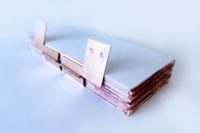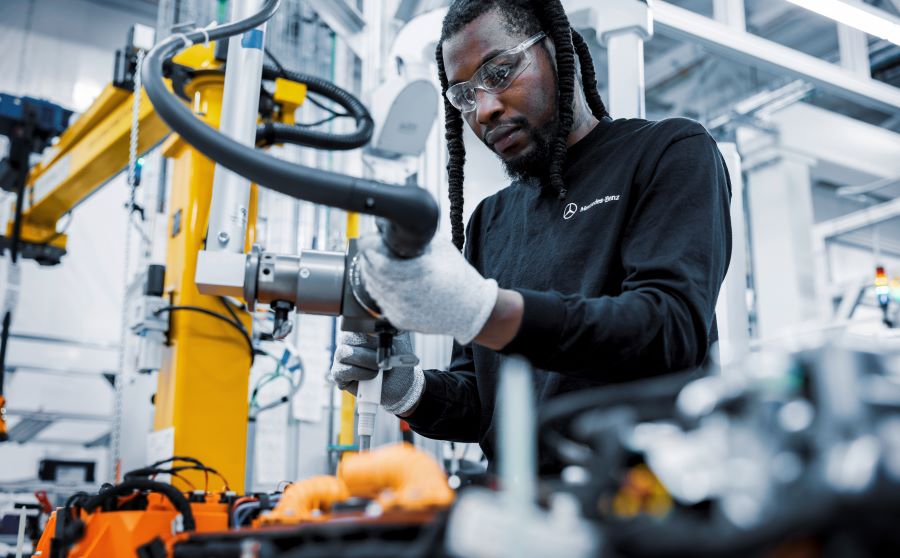COLUMBUS, OH—Lithium batteries are made up of alternating layers of copper and aluminum foils that function as current collectors and substrates for the active materials inside the cell. These foils can be as thin as 7 microns, and generally no thicker than 25 microns.
Multiple layers of foils—from a few dozen to more than 150—must be welded (aluminum to aluminum, copper to copper) to collect the current in each layer and transfer it to one of two thicker collector tabs that exit the battery and are joined to busbars or other battery tabs.
“Welding of battery pack foils is usually accomplished using ultrasonic processes, but some stacks are laser welded,” says Tim Frech, senior engineer at EWI. “Neither process requires filler materials, and both weld at a high productivity rate.
“Laser and ultrasonic welding are both effective processes for attaching battery foils,” explains Frech. “However, neither joining method can be monitored in process. So, when a battery batch is defective, the problem is not identified until after material, time and money has been spent. A foil welding process with built-in weld quality measurement could be an enormous time-and-money saving benefit to [manufacturers].”
To address the issue, Frech and his colleagues recently tested a resistance spot welding technique that uses a capacitive discharge power supply. The system has the capacity to collect and measure data in process, thus offering the potential to monitor quality in real time, and ultimately reduce cost and waste.
“Resistance welding provides precise controls of all process inputs and reliable measurement of all process outputs,” notes Frech. “This data is critical for establishing and maintaining a weld quality standard not currently available with other processes for battery foil welding.”
Another new assembly process that could streamline EV battery production is pulsed arc welding. It creates a high-energy density arc between a tungsten electrode and the workpiece. This results in high local temperatures to melt the metals to be welded, with minimal heat-affected zones.
“Pulsed arc welding is typically used in small-scale welding processes,” says Frech. “Controlling current and welding duration allows for a stable welding process. Since the system is closed-loop, there is the possibility of providing in-process quality assurance.”
On April 7, EWI is sponsoring a webinar entitled “Pulsed Arc Welding for Connection of Batteries and Cells to Tabs and Busbars.” To learn more about it or to register, click here.



